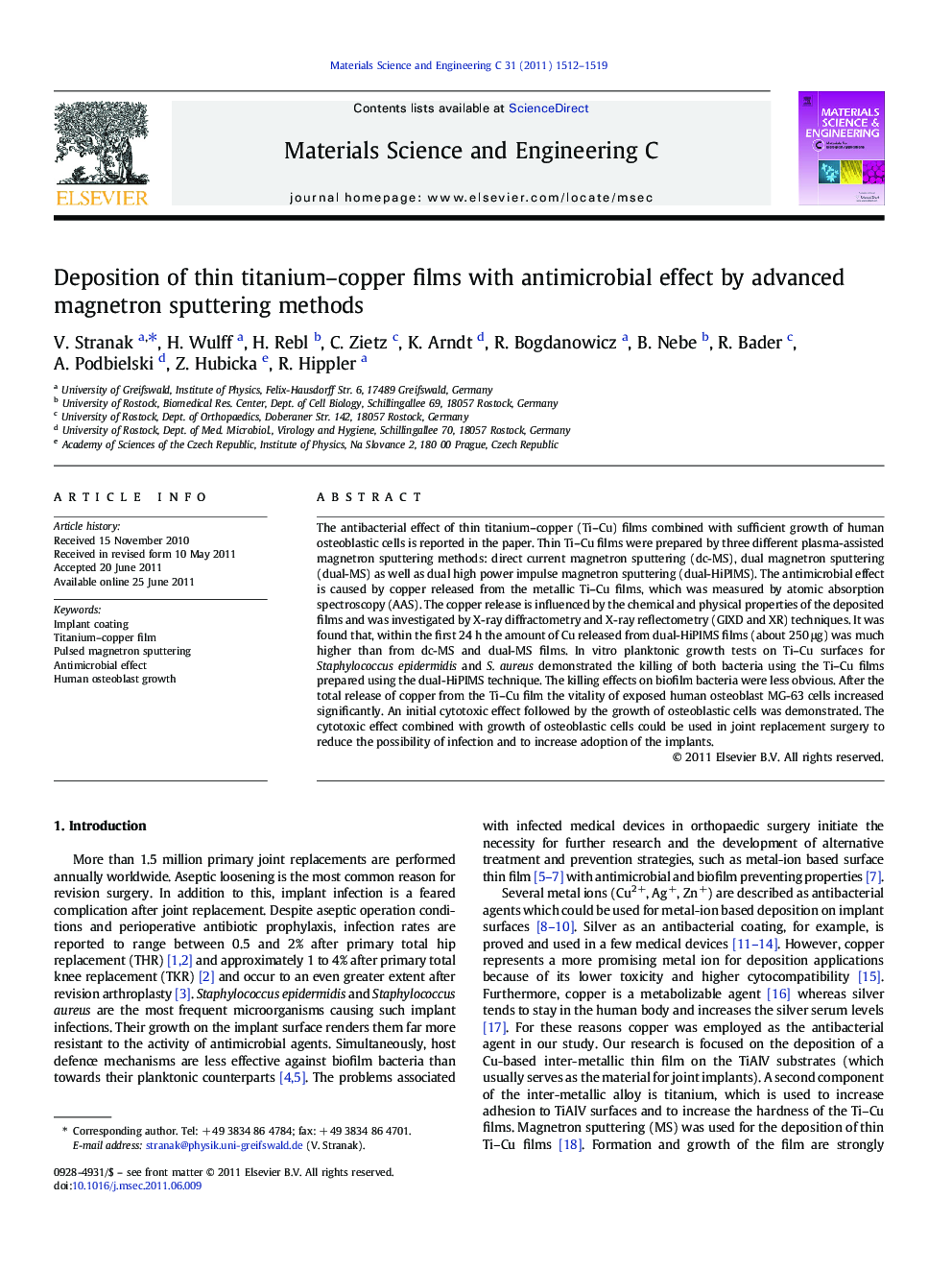| کد مقاله | کد نشریه | سال انتشار | مقاله انگلیسی | نسخه تمام متن |
|---|---|---|---|---|
| 1429741 | 987180 | 2011 | 8 صفحه PDF | دانلود رایگان |

The antibacterial effect of thin titanium–copper (Ti–Cu) films combined with sufficient growth of human osteoblastic cells is reported in the paper. Thin Ti–Cu films were prepared by three different plasma-assisted magnetron sputtering methods: direct current magnetron sputtering (dc-MS), dual magnetron sputtering (dual-MS) as well as dual high power impulse magnetron sputtering (dual-HiPIMS). The antimicrobial effect is caused by copper released from the metallic Ti–Cu films, which was measured by atomic absorption spectroscopy (AAS). The copper release is influenced by the chemical and physical properties of the deposited films and was investigated by X-ray diffractometry and X-ray reflectometry (GIXD and XR) techniques. It was found that, within the first 24 h the amount of Cu released from dual-HiPIMS films (about 250 μg) was much higher than from dc-MS and dual-MS films. In vitro planktonic growth tests on Ti–Cu surfaces for Staphylococcus epidermidis and S. aureus demonstrated the killing of both bacteria using the Ti–Cu films prepared using the dual-HiPIMS technique. The killing effects on biofilm bacteria were less obvious. After the total release of copper from the Ti–Cu film the vitality of exposed human osteoblast MG-63 cells increased significantly. An initial cytotoxic effect followed by the growth of osteoblastic cells was demonstrated. The cytotoxic effect combined with growth of osteoblastic cells could be used in joint replacement surgery to reduce the possibility of infection and to increase adoption of the implants.
► Ti–Cu films with significant cytotoxic effect were prepared by dual-HiPIMS technique.
► The cytotoxic effect is caused by total release of copper species from thin films.
► The copper release is influenced by crystallography and chemical properties of thin films.
► Sufficient growth of osteoblastic cells follows after copper release.
Journal: Materials Science and Engineering: C - Volume 31, Issue 7, 10 October 2011, Pages 1512–1519